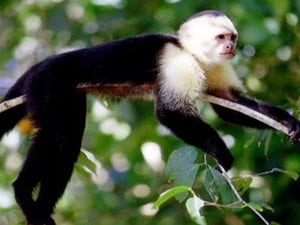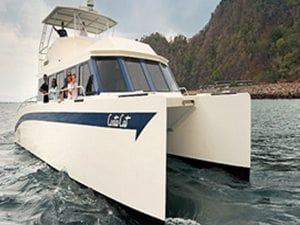Volcano Costa Rica Expedition
The acidity varies after rain and changes in volcanic activity, sometimes reaching a pH of almost 0; consequently, it supports little or no aquatic life.
The bottom of this lake is covered with a layer of liquid sulphur. Acid gases create acid rain and acid fog, causing damage to surrounding ecosystems and often irritation of eyes and lungs.
Lake Botos, the southern lake, fills an inactive crater, which last erupted in 7500 BC. It is cold and clear, and is surrounded by a cloud forest located within the Poas Volcano National Park.

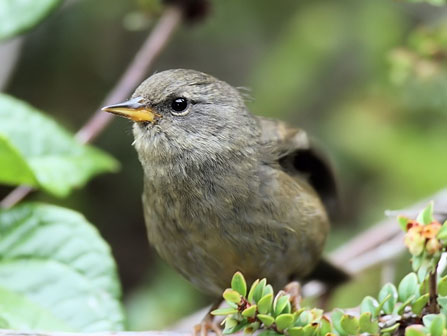
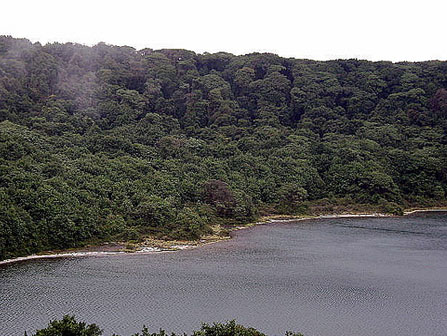


Poas Volcano Costa Rica Expedition Tours
The Poas Volcano, (Spanish: Volcan Poas), is an active stratovolcano in central Costa Rica. It has erupted 39 times since 1828.
Crater lakes
There are two crater lakes near the summit. The northern lake is known as the Laguna Caliente (“hot lagoon”) and is located at a height of 2,300 m in a crater approximately 1.7 km wide and 290/300 m deep. It is one of the world’s most acidic lakes.
Details
Price: $147 per person.
Included: Tour Guide, A/C Transportation, Park Entrance,la paz resort zoo animals and waterfall entrance, with lunch.
Departure: 7:00 am from Jaco.
Travel time: 2:40min From Jaco to Poas Volcano.
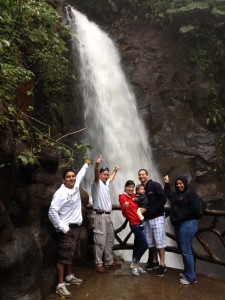 |
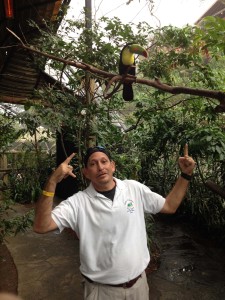 |
Eruptive history
Poas was near the epicenter of a 6.1-magnitude earthquake in January 2009 that killed at least forty people and affected Fraijanes, Vara Blanca, Cinchona (the most affected area), the capital San Jose, and the Central Valley region of Costa Rica.
There was also eruptive activity in 2009 involving minor phreatic eruptions and landslides within the northern active crater. Poas eruptions often include geyser-like ejections of crater-lake water. We will take the Pan-American Highway towards the city of Alajuela.
In route we will go visit the Agriculture Monument, the Monument to Juan Santamaria and the famous Mango Park. As we ascend towards the volcano we will stop for a brief explanation on our golden bean the coffee, and then continue our trip through fern, flower and strawberry farms.
There is a noticeable change in temperature and vegetation, preparing us for the pleasure of the exuberant cloud forest of Poas Volcano. At the Volcano we will have time to enjoy the impressive main crater with its sulfur fumaroles, and hike on a trail to the beautiful Botos Lagoon as we learn about the different ecosystems in the park.
Considered to be Costa Rica s most visited destination, with a constant flow of tourists passing through, the Poas Volcano National Park belongs to the central volcanic mountain range.
It is located about 30 kilometers (18.5 miles approximately) away from the city of Alajuela, in the province of the same name, and on January the 25th of 1971 it was declared as a national park. Encompassing an area of 5.600 hectares (almost 14 acres), this active volcano is known for its vapor emissions, small scale continuous explosions similar to geyser activity, and lava eruptions.
The volcano has an area with two craters. The main one is 1.5 kilometers (1 mile approximately) in diameter and around 300 meters (980 feet approximately) deep, with a lagoon that is about 350 meters (1,148 feet approximately) in diameter, and with a sort of cone shape elevation rising over it at about 40 meters (130 feet approximately) that has quite active fumaroles (a volcano opening from which vapor and steam rises).
The second crater is where the poas lagoon is located, which mainly originates from the accumulation of rainwater.
The cold waters of this lagoon make its way down towards the Caribbean by way of the Rio Angel; itself being a tributary of the Sarapiqui river.
There are those that firmly believe that the name of the volcano comes from the Latin word because of the existence of small spiny plants with quills and needles (pua) that crop up around the whole area. The other theory is that it derives from the same name of a town that is located on the outskirts of the large land mass.
Records show that the eruptions of the Poas have been known to occur as far back as 1747, when the Spanish governor Juan Gemir informed the community of the volcano s activity. One particular event in the history of the volcano is worth mentioning, when the eruption of 1910 caused a massive ash cloud which elevated to a height of 8,000 meters (26,250 feet approximately).
It is latest active period; with records dated from the years 1952 and 1954; also caused great ash clouds, glowing hot rocks, seismic movement and subterranean thunder and rumbling.
Poas Volcano
While the volcano s activity has been quite tempered, in 2009 an earthquake shook throughout the surrounding outskirts which completely destroyed the villages of Chinchona and Vara Blanca. The earthquake reached an intensity of over 8 degrees on the Richter scale.
Its forest area is very dense and very humid. The majority of the trees like the cedar, the oak, and the cypress reach a height of over 20 meters (65 feet approximately) and are completely covered by moss or other parasitic plants.
On the Caribbean side, the forest area reaches an even higher elevation and is even more humid. It is abundant with palm trees, lichens and ferns as well as innumerable amounts of other plants (epiphytes), that are growing above the ground and are non-parasitically supported by other plants and objects and take in their nutrients and water from the humidity, air and rain around them.
In the areas of the park where the gas emissions and past eruptions have killed off and stifled the main vegetation, there are some species that do grow and which have adapted to the acid climate produced by the volcano.
Although the presence of fauna is somewhat scarce, birds are still quite abundant in the area. It is been identified with certainty, that there is around 80 different bird species, within them the strikingly colored Quetzal bird, the Flame-Throated warbler, the toucan, and a bunch of other hummingbird species.
There aren t many mammals living on the elevated, higher terrains of the park, but there are some coyotes, racoons, foxes, and a few wild cats. Because of its amazing scenic beauty and the potentially energizing qualities of its connected geothermic waters and springs, the Poas Volcano National Park makes up one of the most attractive tourist destinations in Costa Rica, with plenty at offer in terms of lodging, hiking, group nature walks and much more.
And best of all, it is barely two hours away from San Jose, which you can actually see from a distance on clear and cloudless days.


